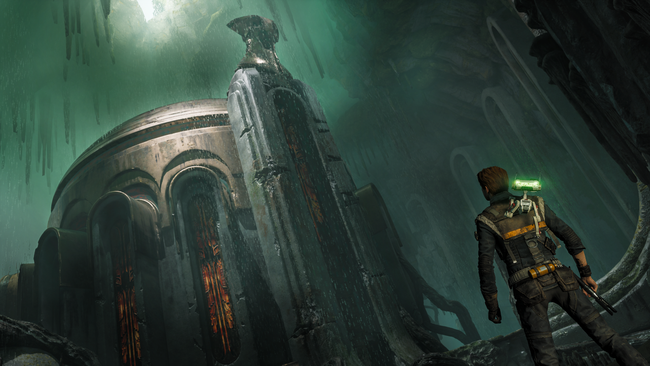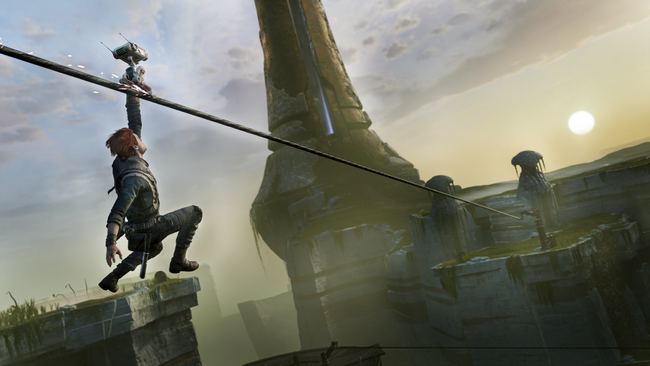
Branching Path: Star Wars Jedi: Fallen Order Hands-On Impressions
I’m not really that big of a Star Wars fan. Never have been. I’ve enjoyed watching the movies well enough, and I’ve seen plenty of the multiple animated series thanks to my dad who is very much a huge fan, but as for myself? Yeah. Probably the only Star Wars media that I really latched on to was Star Wars: The Force Unleashed. I enjoyed it a lot! Never got to the sequel, but between hearing about how many other Star Wars games are so acclaimed, I’ve been meaning to play another Star Wars game eventually. Although I wasn’t exactly hyped for Star Wars Jedi: Fallen Order, the fact that Respawn Entertainment was on the project to begin with and it was targeting a genre that, as far as I can tell Respawn has never tackled, left me interested to see what the team could come up with.
Well, Fallen Order definitely didn’t really have enough RPG elements for us to classify it as one (not that that has stopped us from covering genre-adjacent games like Metroidvanias in the past) – but what the game has ended up being is a shockingly good mix of Metroid-styled exploration, Dark Souls/Sekiro combat, and puzzle-solving that I would’ve expected straight out of The Legend of Zelda. If the rest of the game matches the quality that my 3+ hour hands-on session with the game showed, Respawn has something truly special on their hands.
Something that instantly impresses me when playing a game, is when a developer manages to use one action for multiple functions. Not in the sense that multiple actions are mapped to the same button, but rather doing an action itself has multiple uses within the game. It could be something as simple as how players can cut down grass, attack enemies, and volley balls of energy in Zelda. Fallen Order follows this sort of design philosophy, in my eyes, to great effect. The left bumper is the player's default block button, and much like as in Sekiro – blocking an attack at just the right moment can parry an enemy, usually leaving them open to a lethal counter-attack. If the attack was a ranged laser, more often than not the ricocheted laser will take out a Storm Trooper in the one hit.

That’s all well and good, but the bit that really got me when dealing with blocking probably clicked the moment that I entered an area without a lot of light. You see – while blocking, Cal (the game’s protagonist) will hold his Lightsaber out in front of him. In dark areas, besides defending you, this action also acts as your “flashlight” to illuminate the surrounding areas. It’s such an elegant solution, and most importantly, it makes sense in the context of the game.
During my time playing the game, a lot of Cal’s abilities felt like they distinctly had that sort of quality. Even something as simple as his initial ability to slow down moving objects had a surprising amount of utility – pausing a rotating fan to pass through its blades, slowing a windmill down to use its fins as a platform to cross two sides of a cliff, and more. By the time Cal gets the ability to Force Push, you suddenly gain the ability to stun enemies during certain attack animations, the ability to knock down certain cracked doors/walls, the possibility to push certain objects to help complete specific puzzles, and the ability to reflect certain projectiles that you absolutely can’t parry with your Lightsaber right back at the enemy that originally shot it at you.
Level and puzzle design impressed me, at least the section of the game that I got to play. Near the end of my session, Cal found himself in some ruins that necessitated him to move some spheres into slots so he could progress. The puzzles started off interesting enough – before you gain the ability to Force Push partway through the dungeon, you’ll have to take advantage of air currents to push these spheres – and quickly take on a level of complexity I never expected out of the game. The puzzles weren’t difficult, per se, but they required at least some thinking to complete.

Respawn, if nothing else, probably are best known for the various movement mechanics that the developers have incorporated within the Titanfall series as well as Apex Legends. Naturally, Fallen Order also showcased some rather impressive momentum-based platforming that really made exploring the world feel just that little bit more dynamic. Wallrunning makes a return from Titanfall, of course, but the icy planet that I spent the majority of my demo in was also filled with ice slopes, forcing players to maintain control during their descent, lest Cal flies off the edge. Most of the time, these slopes tied into either a wall-running section or a rope at the end – but they definitely accomplished their goal of spicing things up. There’s a certain verticality to the game that I’m not sure I expected – it’ll definitely be interesting to see how the rest of the planets line up.
When I mentioned “Metroidvania” earlier, I meant that in a literal sense. Even once I had “finished” the story on a planet for the time being, there were plenty of areas that I still didn’t have access to with Cal's current loadout and abilities at the time. Even during my exploration in a single location, there were multiple areas that I could only access once I had returned upon receiving the Force Push ability in the ruins down below the surface. While the extent to which that’s the case for the entire game remains to be seen, what I played was filled with shortcuts wrapping around the level, new sections that I could explore upon receiving my Force Push, and more.
Combat in Fallen Order, is fast and fun. When I mentioned Sekiro earlier, part of that was me thinking about how the combat works. I already mentioned parries, but it’s also worth repeating that both you and most of your human(oid) enemies will have meters denoting how much 'guard' they have. If an enemy’s guard breaks, you’ll be free to deal a lethal attack to them – though if you’re surrounded, it could spell a death sentence to you too. It's not completely inventive, but it's snappy and smooth all the same. Using the Force during combat will drain some of your Force meter, which includes dealing strong attacks and/or using your other force powers to interrupt/slow an opponent. Naturally, you have your attack button mapped to X/Square depending on your platform of choice.

Skills, and the way that you earn skill points is perhaps the most direct comparison to Sekiro out of anything else in the game. Fallen Order takes the Dark Souls 'bonfire' approach to progression through the game world, where you save at pre-determined points, though choosing to replenish your health/healing items will also respawn any of the enemies that you had faced earlier. Much like in Sekiro, defeating enemies awards experience – and by the time the bar fills up, you’ll receive a skill point to freely upgrade Cal’s abilities. Naturally, some of these abilities will be unavailable for the start and slowly added in as the game continues and you're able to unlock new abilities to experiment with. Dying in Fallen Order will cause you to lose any of your experience that wasn’t already turned into a skill point.
Needless to say – I had an absolute blast playing Fallen Order in the time I had. Assuming the quality doesn’t dip later on in the story, Respawn and EA absolutely have something great with the developer's first project within the Star Wars IP. I didn’t expect the game to interest me this much going in, but I’m always glad to come away from a preview absolutely shocked and surprised at how enjoyable a game is. Here’s hoping the rest of the game matches the quality of what I played, when it releases on November 15th.
Disclosure: We managed to play several hours of the game a few days ago, thanks to EA covering accomadations for a press event for the game.